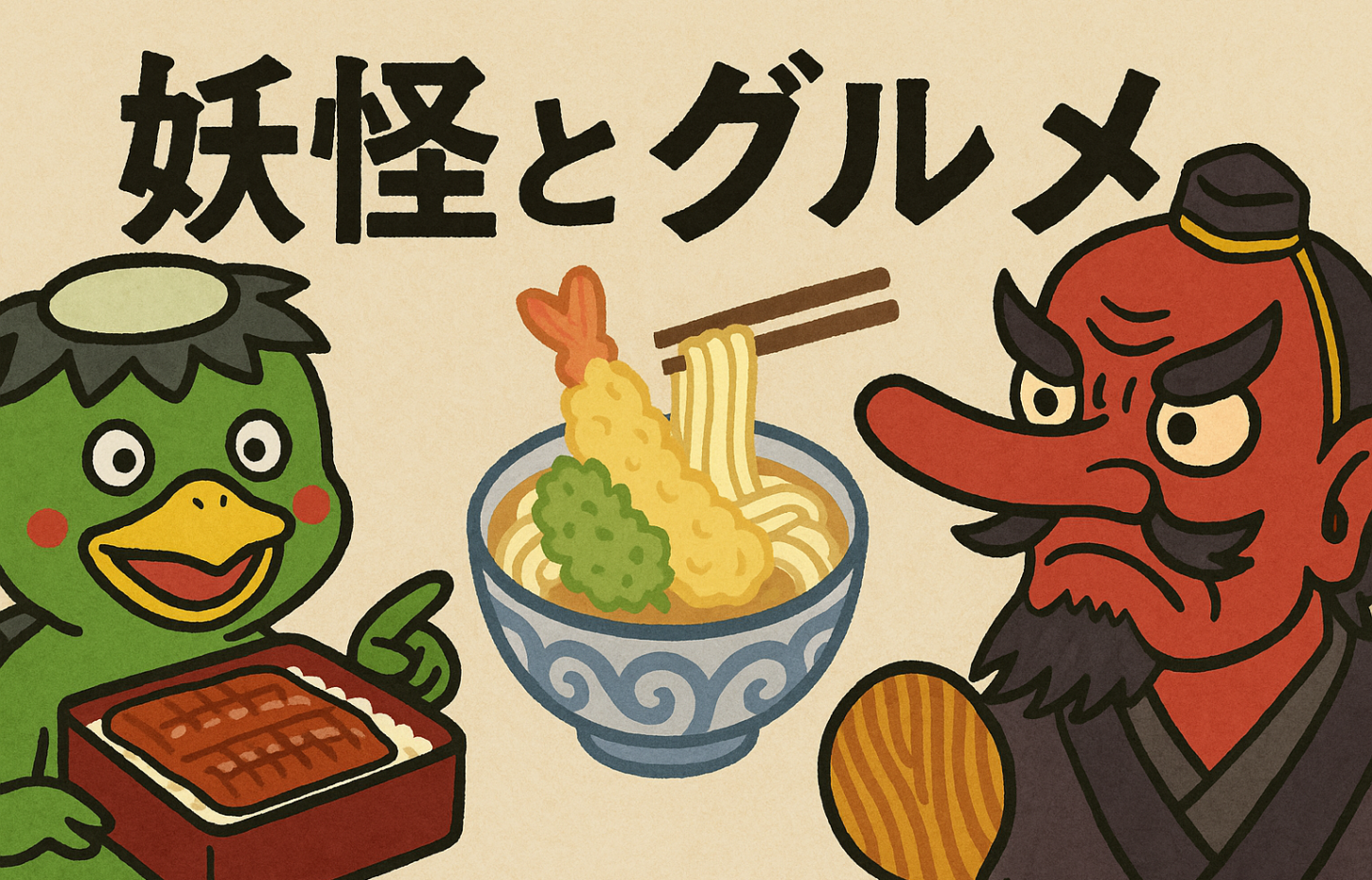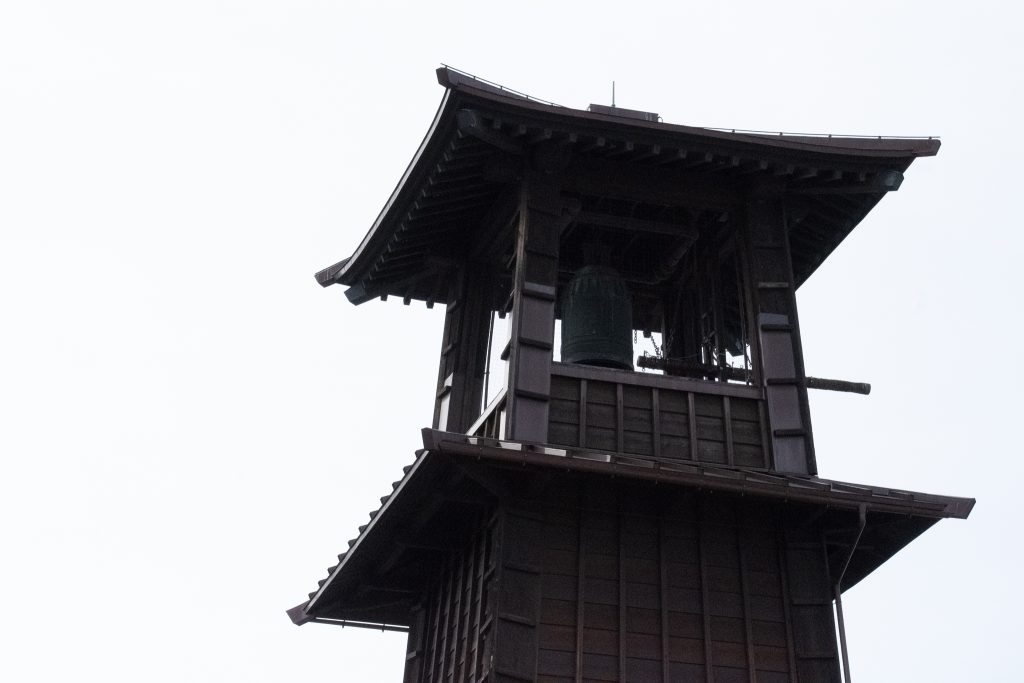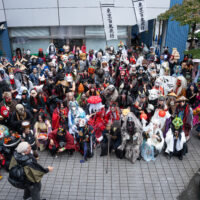
Walking through Kawagoe with the Yokai - from Koshin towers to Tengu legends, spiriting away, and exquisite longevity gourmet food!

In the town of Kawagoe, real beliefs and legends that cannot be summed up simply as yokai quietly live on. This time, we will introduce a walking course that traces real folk beliefs such as koshin belief, tengu, and spiriting away, tracing the "memories of the town" behind its tourist image.
The Bell of Time and the Koshin Tower - The sound of the bell seals away the three dead insects
When you think of Kawagoe, the first thing that comes to mind is the Bell of Time. Even today, the clear sound of the bell resonates through the city four times a day: at 6am, noon, 3pm, and 6pm. Behind the bell tower, Yakushi Shrine stands quietly and unobtrusively. Also within the shrine grounds is a Koshin tower with carvings of the three monkeys (see no evil, hear no evil, speak no evil) and the Blue-faced Kongo.

Koshin belief originated in Chinese Taoism and has been practiced in Japan since the Heian period. The Sanshi insects, which are said to live inside the human body, rise to the sky on the night of Koshin and tell the Heavenly Emperor of the human's evil deeds. People who believed this would gather together on the night of Koshin, hold meetings (Koshin-ko) and try to prevent the Sanshi insects from escaping. Traces of this can still be seen today in the form of Koshin towers around town.
A total of 92 Koshin towers have been confirmed in Kawagoe City, with many scattered from Renjaku-cho to Senba-cho. Stone towers from the Kanbun, Genroku, and Meiji periods in particular are engraved with the beauty of their form and the changes in faith over the years, giving a sense of the depth of the folk faith known as Koshin-ko.
Kosaiji Temple and Tengu - Guardians of Fire Prevention
Kosaiji Temple sits quietly just outside the rows of storehouses in Kawagoe. There is a legend that a Tengu protected the town from a fire here.
In the past, the town of Kawagoe was constantly plagued by fires, and the townspeople offered prayers to the gods and Buddhas who would prevent fires. At Kosaiji Temple, there is an anecdote about a Tengu using a feather fan to create wind and divert the flames, and this design can be seen on the gateposts and the decorations of the temple. Tengu as a being that prevents fires - their role is passed down not as a demon, but rather as a guardian of the land.
Also, along with the legend of Tengu, there is the word "Dairenji Fire." This is the name of the mysterious fires that are said to have appeared around the temple, and it was thought to have been the work of some kind of spiritual being. It is becoming a lost word these days, but the sound of this word really makes you feel like you are standing straighter while walking around the town.
Karasuyama Inari Shrine - The Hill of Spirited Away
The legend of Karasuyama Inari Shrine is that when samurai were cutting down trees in the forest during the construction of Kawagoe Castle, they suddenly disappeared. The shrine, which sits on a small hill surrounded by flocks of birds, still has an air of "spirited away" to it.
Spirited Away is a phenomenon in which people suddenly disappear. In the past, it was said that they were drawn into the world of the gods, and was sometimes interpreted as the work of monsters or contact with another world. This shrine, located on the edge of Kawagoe, feels like another world, one step away from the hustle and bustle of the town, and when you stand in front of the lion fox statues, you will feel as if time is slowly changing.
Enjoy Kawagoe eel and Musashino udon noodles along with traditional cuisine
One of the best parts of traveling is enjoying the local cuisine while walking around the town. Kawagoe has a long history of eel culture dating back to the Edo period, and you can enjoy it as a symbol of health and longevity.
Below we will introduce some of the most well-known eel restaurants.
- Ogawa Chrysanthemum: Founded in Bunka 4 (1807). The fragrant skin and soft flesh are exquisite.
- Ichinoya: Founded in 1832. Steamed and hitsumabushi dishes are also popular.
- pavilion: Founded in 1868. Characterized by its rich sauce and fragrant grilled food.
- Hayashiya: Uses binchotan charcoal. Enjoy casually in a homely atmosphere.
- Ponpokotei: Made with domestically-produced eel. A modern style that can be enjoyed with wine.
And one more thing that should not be forgotten is "Musashino Udon". The firm texture of the local flour and the richness of the meat juice are its charms. The following shops are especially popular. Saitama Prefecture is:Udon(Noodles) production is the second largest in the country,consumptionIt is ranked 5th in the nation! It can be said to be a true udon kingdom.
- Hase Pond: Right next to Hon-Kawagoe Station. Enjoy the natural broth and firmness of Sanuki-style noodles.
- Fujiten Udon: Within walking distance from Kawagoe Station. A famous Musashino udon restaurant where you will inevitably have to queue.
- Tsumugi: A new restaurant with locally produced ingredients and a modern atmosphere. It is popular for its creative udon noodles and carefully prepared dashi.
- Udon Tatsumi: 4 minutes walk from Hon-Kawagoe Station. The fragrant bowl of niboshi broth and the fried tempura served in the restaurant are the highlights. The restaurant is casual and easy to enjoy, so you can eat while walking around.
The combination of traditions and local cuisine makes it more than just a sightseeing trip; it's a journey to experience the town.
In lieu of conclusion
Yokai are not necessarily "scary beings". They are rooted in the local community and are a medium that connects the land and people. Koshin faith, Tengu, and spirited away. The town of Kawagoe certainly has layers of such invisible memories. The next time you visit Kawagoe, be sure to listen carefully to these "presences" as you walk around the town and enjoy the food.







No comments yet.